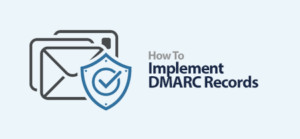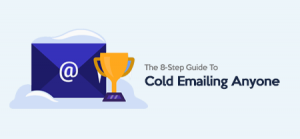Want to write cold emails that get read? Here are some of the best-known strategies for writing a perfect cold email that always gets a read.
Make Sure the Headline is at Least Neutral
Think about cold emails from the point of view of the recipient who receives it. All of us have received cold emails in the past, and it's pretty obvious when you receive a bad cold email.
Why it's bad?
A couple of things hit you right away. When you look into your Gmail inbox, you'll see the subject line and you'll see a little bit of the first line of the email, and those two things will make you decide whether to delete that email or open it. So the first thing to do is to make sure the subject line is at least neutral. That's why generic subject lines are good.
The reason why those generic subject lines work is that they don't turn somebody off. If you pitched your product in that subject line, there's a much higher chance you're going to get deleted, which means they're not even going to read the body of the email.
The First Line Should be Very Specific
The first line of the email needs to be very specific to the prospect’s business. You can use a compliment. An example of such an email headline would be:
'Hey Mark, Came across [agency name] Congrats on working with Power Rangers!'
Or if you're targeting local restaurants
'Hey, just looked at your website and love the food photography.'
What that'll do is get them to open the email, which means you've already beat out most of the bad cold emails because you're not in spam, and you're actually getting open.
The main way to get somebody to respond to an email is to tell them something they already think is true and speak of it like an expert. Tell them the solution.
For instance, 'Hey you know [do that normal compliment], found your website really like the work you're doing with Power Rangers. My name is Alex and I do marketing for digital agencies...'
Or if you’re talking to a digital agency, and you say you do marketing for a digital agency that's instantly going to make them spark up.
If you're targeting SaaS companies you could say,
'Hey, I do marketing for SaaS companies...'
or you could say something like
'Hey I just got off the phone with the CMO of a major telecom company, and they had these two main issues. Here are the solutions. I'm wondering if you're dealing with anything similar, [and then two specific ideas].’
Use the exact same ideas per industry. For instance, when you’re reaching out to CEOs of an agency with between 1 million and 20 million in revenue they're most likely going to be dealing with the same issues, where if you were reaching out to the CMO of that same type of company they might have different issues. And those two issues only come from talking to your customers.
For instance, you have a coaching call with somebody who sells Facebook ads in the e-commerce space and in his idea email the main thing he has to be pointing out is:
Facebook ads with videos sell worse sometimes than Facebook ads with still images, so he recommended testing both. That is a very niche, very specific idea. Coming up with those is how you get responses.
End Each Email With a CTA
'Let me know if you find this interesting. We'd love to hop on a call with you and discuss further. Would you mind if I sent over a few times?'
The call-to-action doesn't really matter as long as it is a question they can understand which ends with an actual question mark. You'd be surprised how many emails go out that end in a period.
What’s the Process of Finding the Right People to Contact?
It goes back to putting yourself in the shoes of your customer and who would you rather buy from. For instance, if you're the CEO of a major company, let's say you're T-Mobile, huge enterprise company, would you buy Facebook ads from somebody, or would you delegate that decision to a CMO?
Would that CMO delegate that decision to another Director of Marketing, maybe Director of Marketing - Paid Acquisition. Thinking about that decision-making tree at the target company is the main way that you can find titles to go after and then from there it's using LinkedIn to identify the target customer.
Typing in Director of Marketing, T-Mobile, for instance, will bring up a list of people on LinkedIn. Then it's going back to those assumptions to find which of these targets is the one that's likely to buy from you. So, for instance, a Director of Media and Marketing at T-Mobile is probably a better fit than Director of Field Sales at T-Mobile, unless you're selling a product that benefits the field sales team.
For each specific company, especially if you're targeting someone like the Fortune 500, it's worth doing this deep dive.
Alternate Method
If you don't want to do all of this research the quickest way is to start with the CEO. Email them. If they don't get back within two weeks then go down one level. Email the Director of Marketing. If they don't get back within two weeks then go to the next level.
It is not recommended to send multiple emails to the same company at the same time because that is a quick way to get written off by that entire company.
Sales Tip of the Day
Approach every client call not like you are a sales guy trying to pitch a product, but instead like you're a doctor trying to diagnose a disease.
What does that mean?
You are on a sales call and you sell marketing services for agencies and you are talking to an agency owner. You know because of your research and because of your cold emailing process that they're between one and twenty million dollars in revenue, and based on your past conversations not with them but with other agency owners in the same spot, you have a very good idea of how they think and problems that they might be dealing with.
Now, don’t come right out and say it. Instead, give a two-sentence on what your agency does, and then ask them about their marketing. Have you hired a marketing vendor in the past who runs marketing for you right now? Do you have key performance indicators?
Set up questions that don't lead them towards a specific answer, but give you a better idea of what they need to know. Your sales managers might have given you scripts or key points to hit, but the easiest way to sell anything is to:
- Listen to a question
- Relate it to a case study
- Answer based on past experience
So if they say as an example, 'Oh we've run all of our marketing internally this entire time, and it's just me who runs the marketing.’
You could say something like 'That happens in a lot of agencies. The one founder tries to
take on marketing and also sales and also do production and it slows everything down. I know a ton of marketing agencies and based on their client results you'd think they were crushing it, but then you look at their website, and their inbound leads are way lower than where they should be and that's the exact type of thing that we help with.'
What you did there is you heard his answer, you internalized what he said, you listened to him, and then you took it back to your pitch and brought up one of your case studies.
That about it for this post. You just got a power-up, now go do something with it. If you are interested in Email Marketing Free Courses, fell free to check H-Educate.




![Email Accessibility Guide [2025]](https://ik.imagekit.io/debounce/wp-content/uploads/2022/07/email-accessibility-guide-2-300x139.png)
